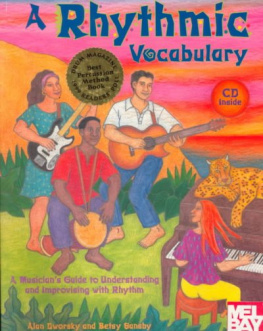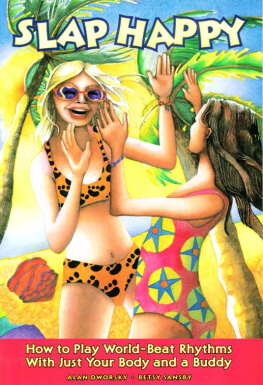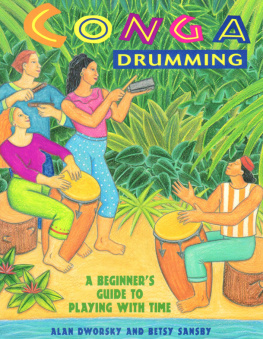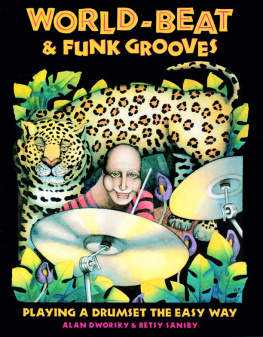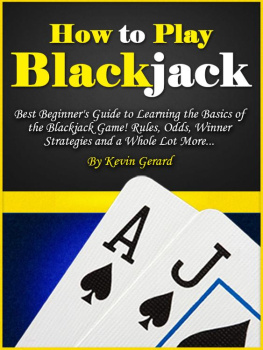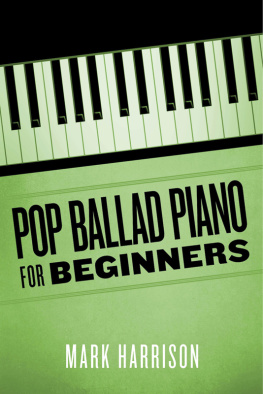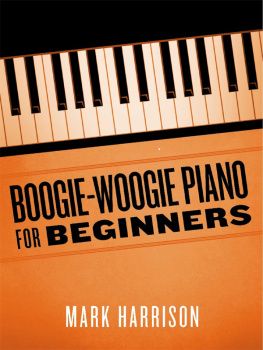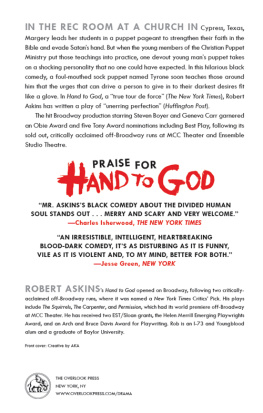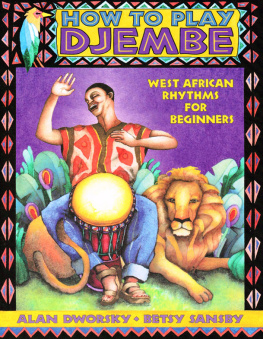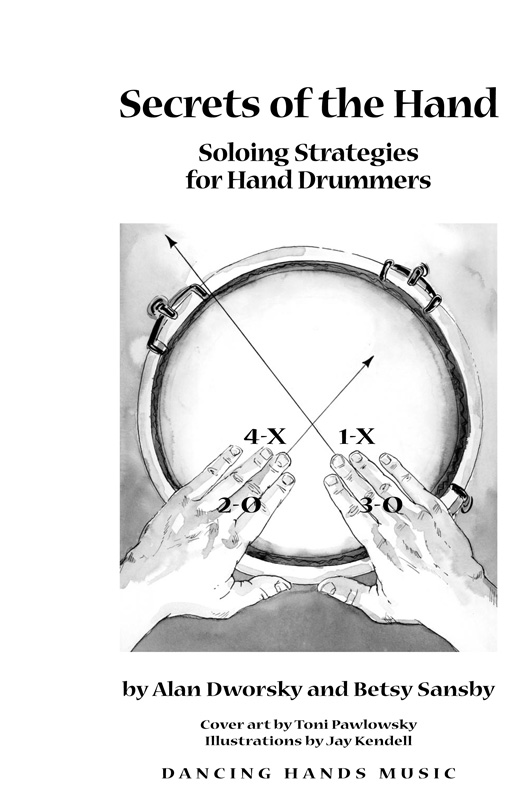
Important Notice
If you would like to see hear how every pattern in this ebook sounds, downloadable audio files of those patterns are available at www.dancinghands.com.
At the end of this ebook, youll find information about other instructional books and videos available from Dancing Hands Music. These include the Gentle Djembe for Beginners video series, as well as the videos Bongo Grooves for Beginners and Cajon Grooves for Beginners.
Secrets of the Hand - Soloing Strategies for Hand Drummers
Copyright 2001 by Alan Dworsky and Betsy Sansby
All rights reserved. No part of this book may be used or reproduced by any means without permission.
Published by
D ANCING H ANDS M USIC
4275 Churchill Circle
Minnetonka, MN, 55345
phone or fax: 952-933-0781
dancinghands.com
email: alanlee@dancinghands.com.
Book design and layout by Mighty Media
Cover art by Toni Pawlowsky
Illustrations by Jay Kendell
Printed in the United States of America with soy ink on recycled, acid-free paper by Banta ISG (Viking Press)
ISBN : 0-9638801-6-0 ISBN of ebook version: 978-0-9857398-4-3
The hand speaks to the brain as surely as the brain speaks to the hand.
-R OBERTSON D AVIES (from Whats Bred in the Bone)
Table of Contents
Who this book is for and how it works
T his book is for advanced hand drummers who want to play complex solos using simple sequences of hand strokes. Whether you play djembe, conga, or ashiko, the practical hand-pattern strategies explained here will help you get the most out ofyour hands with the least amount of effort. And whether you want to solo in a traditional African or Afro-Cuban ensemble, in a drum circle, in a band, or in your living room along with your favorite CDs, Secrets of the Hand will help you take your playing to the next level.
You dont need great natural hand speed to master the strategies in this book, but you do need a solid understanding of rhythm. You should be comfortable playing in both four and six and have a basic understanding of how cross-rhythms and polyrhythms work. If you dont already have that foundation, one way to get it is from our book A Rhythmic Vocabulary. In one sense, Secrets is an applied Rhythmic Vocabulary for hand drummers. It builds on the patterns and concepts in that book while showing you how to play with maximum ease, consistency, speed, and freedom.
This book is organized into two main sections. Part 1 covers the five basic hand-pattern strategies and Part 2 covers five strategies for creating the illusion of speed. Each new strategy builds on the ones before it. And while youre learning the strategies, youll also be learning over a hundred patterns that should be a fountain of ideas for you when you solo.
Most of the patterns are based on lead phrases played by djembe and conga drummers in African and Afro-Cuban music. But were not trying to teach any particular style of drumming. You can use these patterns anywhere with any kind of music as long it has a solid groove. And although weve limited the patterns in this book to those that can be played with just slaps and tones on a single drum, you can certainly use other techniques and additional drums if you like.
The strategies in this book will help you become a more competent soloist. But theres much more to soloing than what can be covered in a book. Great soloists are great storytellers. They know when to speak and when to be silent, when to say little and when to say much, when to let a rhythm simmer and when to bring it to a boil. These skills cannot be taught. They are the result of some mysterious combination of talent, experience, imagination, inspiration, and passion. What can be taught is how to get your head and hands working together more effectively. And thats what this book is all about.
CHAPTER 2
The charts and the count
Heres a sample chart:

Time moves from left to right and each vertical column shows whats happening on a single beat. Each of the three horizontal rows gives you a different kind of information.
The top row tells you how to count a pattern. The symbol + stands for AND. The shaded boxes on the count row indicate the pulse - the underlying metronomic rhythm people feel in their bodies when music is played.
The middle row tells you when and how to hit the drum. If theres a symbol in a box, you hit the drum on that beat with the stroke indicated by the symbol. Here are all the symbols for the different strokes:
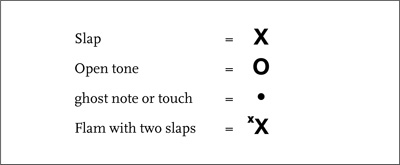
Sixteenth notes are indicated by two smaller symbols in a single box. Eighth-note triplets and quarter-note triplets are indicated with curved lines over the stroke symbols:

The bottom row on the chart tells you which hand to use. If youre lefthanded, you can reverse the hands.
We count patterns in four in cut-time, with two half-notes to a measure. This puts the pulse on beats 1 and 3 in each measure. Each subdivision of the pulse - or beat - is an eighth-note.
We chose to count in cut-time rather than 4/4 for several reasons. We find its easier to work with two short 8-beat measures than with one long 16-beat measure. We also like the counting system in cut-time better because it gives you a number as a reference point every two beats instead of every four. And we find it easier and more natural to talk about rhythms in cut-time. Its awkward talking about the ee of 3 or the uh of 4. Finally, tradition played a role in our decision - Afro-Cuban rhythms in four are generally counted in cut-time.
We count patterns in six in 6/8 time, with 6 eighth notes to a measure. The pulse falls on beats 1 and 4 in each measure, and each pulse is divided into three eighth-note beats. Heres a sample chart in six:

We chose to count in 6/8 rather than 12/8 for many of the same reasons we chose to count in cut-time. We find its easier to work with two short 6-beat measures than with one long 12-beat measure. We like the counting system in 6/8 better because each beat gets its own number. Rhythms in 6/8 are also a lot easier to talk about than rhythms in 12/8. (You already know how we feel about referring to the uh of 4.) And finally, tradition again played a role in our decision because Afro-Cuban rhythms in six are generally counted in 6/8 time.
To make the charts as big as possible, weve made them just long enough to show a single repetition of each pattern. But you should think of every chart as being written in a circle. When you get to the end, go back to the beginning and start over without missing a beat.
Think of every chart as being written in a circle. When you get to the end, go back to the beginning and start over without missing a beat.
We havent put any tempo markings on our charts. Ultimately, the tempo of a rhythm will depend on your playing situation. We recommend that you start slow and gradually increase your speed on each pattern until you can play it as fast as your hands will move. And as soon as you can play a pattern, we recommend that you play it along with a variety of recorded music at different tempos. This will help you understand how the patterns sound in a realistic context. It will also make playing a lot more fun.
Next page

